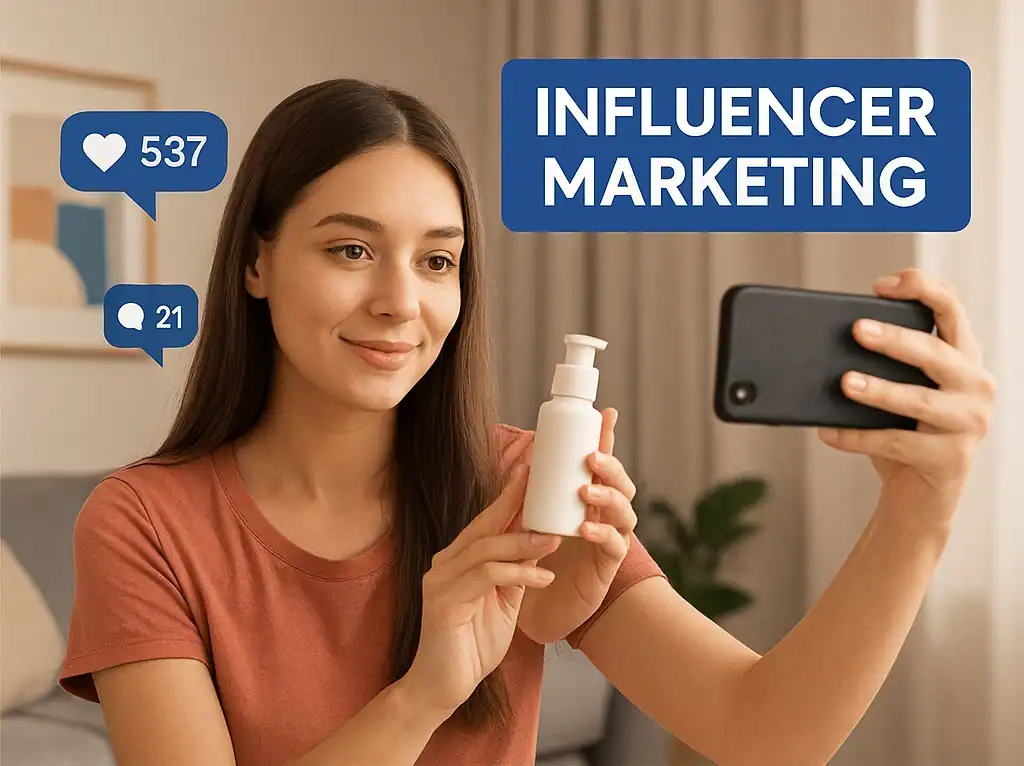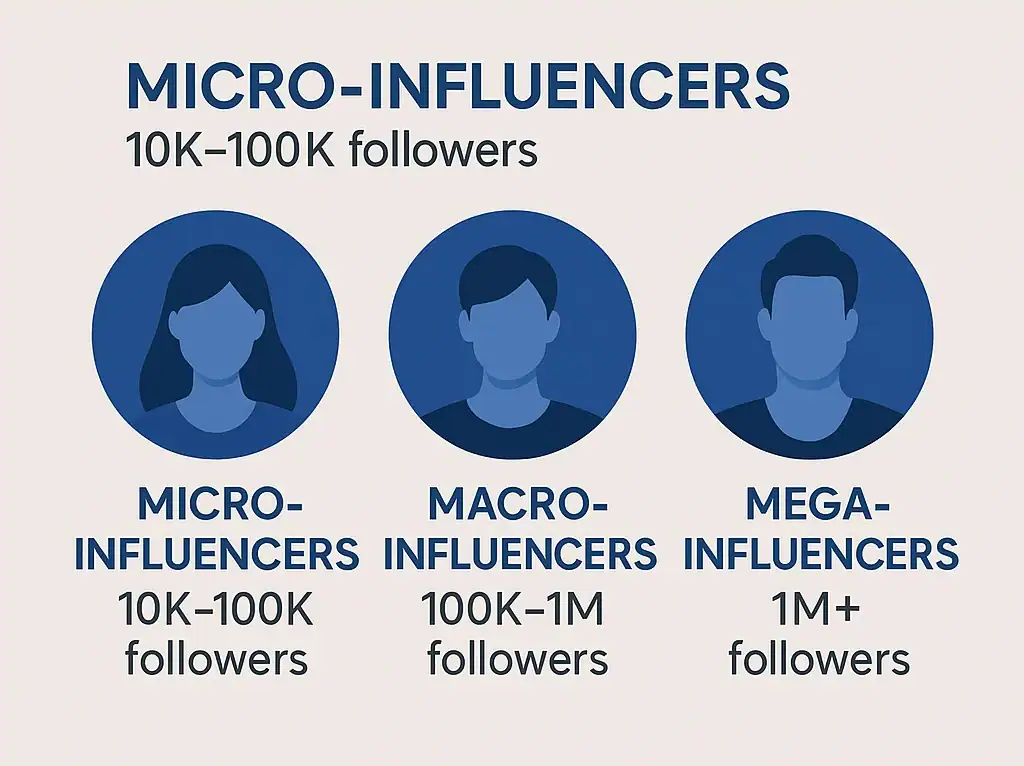In today’s digital landscape, few strategies are as powerful—or as personal—as influencer marketing. Rather than relying on traditional ads, brands are tapping into the trust and reach of social media personalities to promote their products in a way that feels authentic and relatable.

What Is Influencer Marketing?
Influencer marketing is a form of brand promotion that leverages content creators with loyal and active followings—typically on platforms like Instagram, YouTube, TikTok, or LinkedIn. These individuals can amplify a brand’s message by sharing products and experiences with their audience in a genuine, non-intrusive way.
Types of influencers:
- Micro-influencers (10K–100K followers): niche-focused, highly engaged
- Macro-influencers (100K–1M): broader reach, professional content
- Mega-influencers (1M+): celebrity-level visibility
Why Influencer Marketing Works So Well
- Built-in Trust: People trust people. When a familiar voice recommends a product, it feels more like advice than advertising.
- Precise Targeting: Influencers often cater to a specific niche, making it easier to hit the right demographic without wasting budget.
- Authentic Storytelling: Influencer content blends into users’ feeds as organic, lifestyle-driven posts.
- Stronger Purchase Intent: Especially in fashion, tech, beauty, and food—consumers frequently base decisions on influencer reviews.
How to Build an Effective Influencer Strategy
- Know Your Audience: Define who your product helps—and who influences those people.
- Choose the Right Creator: Look beyond follower count. Engagement rate, content quality, and audience fit matter more.
- Collaborate, Don’t Script: Let influencers bring their voice—but align on messaging.
- Pick the Right Platform and Timing: Instagram, TikTok, YouTube? Publish when your audience is active.
- Track Performance: Use UTM tags and analytics to measure results: impressions, clicks, engagement, conversions. Learn more about UTM tracking.

Types of Influencer Campaigns That Work in 2025
Influencer marketing isn’t one-size-fits-all. Depending on your goals, you can choose different types of campaigns:
- Product Seeding: Send products to influencers for honest, unpaid reviews.
- Sponsorships: Pay influencers for dedicated content, stories, or video segments.
- Affiliate Campaigns: Give influencers a trackable link or discount code to earn commission per sale.
- Giveaways: Boost engagement by collaborating on prize-based campaigns.
Watch Out: Spotting Fake Influencers
Before launching your campaign, make sure the influencer is legitimate. Red flags include:
- Suspicious follower spikes
- Low engagement despite large audience
- Generic, non-personal content
- Comments that look like bots
Tools like HypeAuditor, SocialBlade, or manual checks can help protect your budget.
How to Find the Right Influencers
Finding the right influencer can make or break your campaign. Look for creators whose content style, values, and audience closely align with your brand. Don’t hesitate to analyze their previous brand partnerships, check comment authenticity, and use tools like Modash, BuzzSumo, or CreatorIQ to evaluate engagement and audience quality. A smaller, more engaged audience often beats a massive one with bots and lurkers.
Common Mistakes to Avoid
Even great brands fail with influencer marketing if they ignore these red flags:
- No clear brief: Influencers need creative freedom, but they also need clarity on your goals.
- Focusing only on vanity metrics: High follower counts don’t guarantee conversions.
- One-off collaborations: Long-term partnerships often yield more trust and better ROI.
- No tracking setup: Always use UTM tags, affiliate codes, or promo links to measure effectiveness.
Trend to Watch: The Power of Micro-Influencers
In 2025, micro-influencers continue to outperform in many areas thanks to their tight-knit communities and higher trust levels. For brands in niche sectors, they often drive better ROI than mega-influencers.
Ready to Launch Your Campaign?
Whether you’re a startup or an established brand, influencer marketing can elevate your message and drive meaningful engagement—if done right. Take time to build relationships with creators, track results, and continuously test what works. The brands that win in 2025 will be those that market through people, not just to them.
Want more tips like this? Check out our full marketing blog for strategies, guides, and tools to help you grow smarter.